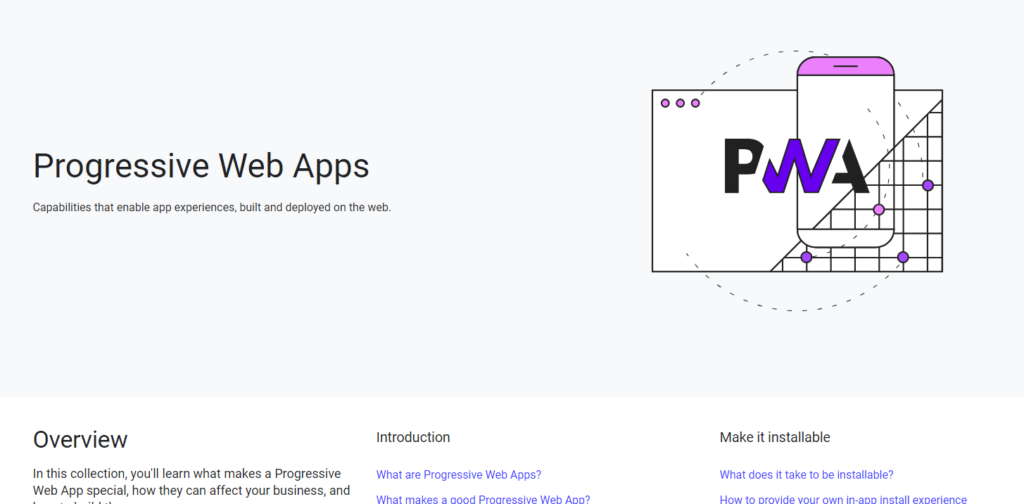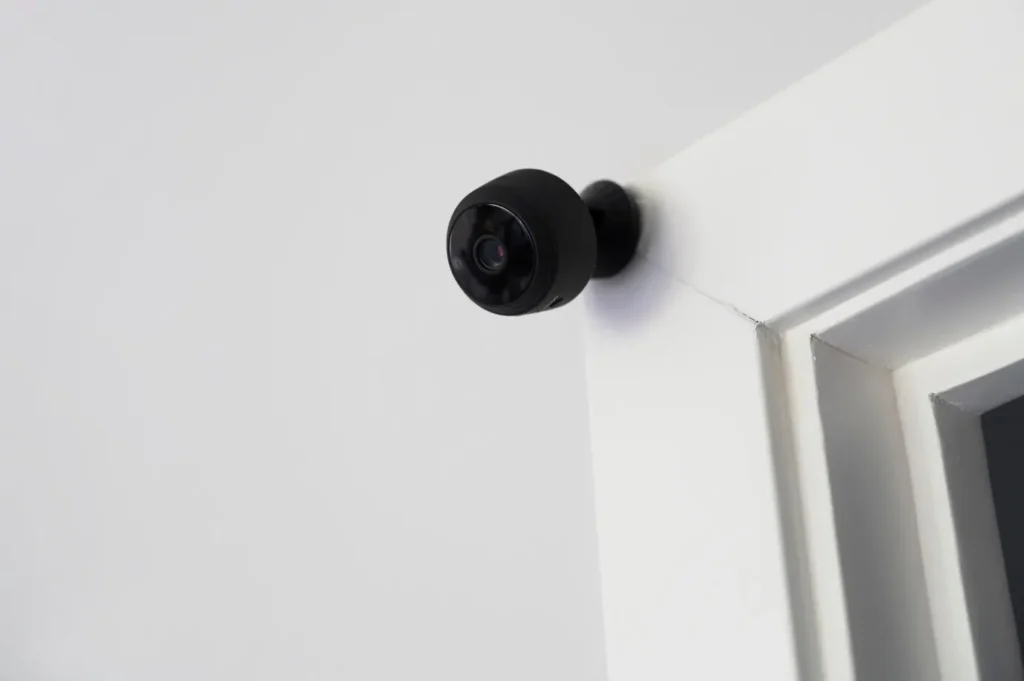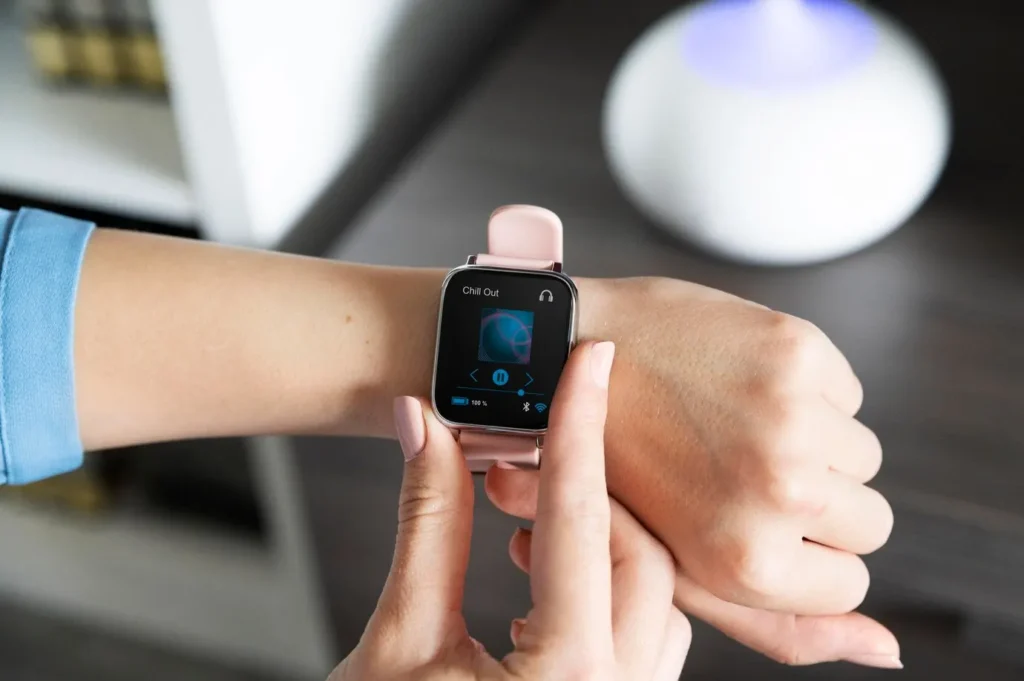As a web development expert, I’m constantly fascinated by the convergence of technologies. One particularly exciting area is the integration of Progressive Web Apps (PWAs) with the ever-expanding Internet of Things (IoT) landscape. This combination has the potential to revolutionise the way businesses interact with their customers and unlock a new level of control for users when it comes to their connected devices.

Why Should Business Owners Care?
Let’s break it down. Imagine a world where your customers can seamlessly control your smart home products, monitor their fitness trackers, or even manage industrial equipment – all through a familiar web interface. That’s the power of PWA-IoT integration.

Here are some key advantages that should pique the interest of any business owner:
- Enhanced User Experience (UX):
PWAs offer a familiar and user-friendly web interface that eliminates the need for downloading and managing multiple native apps for each device. This translates to a smoother and more enjoyable experience for your customers. Additionally, PWAs boast offline functionality, so users can still control their connected devices even if their internet connection drops. Push notifications ensure they receive real-time updates and alerts, keeping them informed and engaged. - Streamlined Development Process:
As a business owner, you’ll appreciate the cost-effectiveness and efficiency of PWA-IoT integration. Existing web development skills can be leveraged to build user interfaces for your connected devices, reducing the need for separate native app development for each platform. This translates to faster deployment times, easier updates, and lower overall development costs. - Scalability and Accessibility:
PWAs work seamlessly across various devices, from desktops and laptops to smartphones and tablets. This eliminates the need to cater to specific operating systems and opens your connected devices to a wider user base. Additionally, PWAs are typically lighter and require less storage space compared to native apps, making them a more accessible option for users with limited device memory.
Bridging the Technical Gap
Now, let’s delve into the technical aspects of this exciting integration. Establishing communication between PWAs and IoT devices requires careful consideration of a few key factors:
- Communication Protocols:
Protocols like WebSockets and MQTT facilitate real-time data exchange between the PWA and the connected device. APIs (Application Programming Interfaces) play a crucial role in allowing the PWA to access and control the device’s functionalities. - Security Concerns:
Security is paramount in a connected world. Implementing robust authentication and authorization protocols alongside data encryption and secure transmission practices is essential to safeguard user privacy and device integrity. - Device Compatibility:
Bridging the gap between the capabilities of PWAs and the diverse range of IoT devices can be a challenge. Fortunately, standardization efforts are underway to ensure better interoperability. As technology advances, we can expect seamless communication between PWAs and a wider variety of connected devices.

Real-World Applications
The potential applications of PWA-IoT integration are vast and continue to expand. Let’s explore some real-world examples that showcase the power of this technology:
- Smart Homes:
Imagine a PWA that allows users to control their entire smart home ecosystem – adjusting lights, setting thermostats, and managing appliances – all from a user-friendly web interface. This not only enhances convenience but also empowers users to monitor energy consumption and automate tasks for a truly connected living experience. - Wearables and Fitness Trackers:
PWA integration can eliminate the need for bulky, device-specific apps. Users can view their health data, customize settings, and track their fitness progress directly through a PWA. This streamlined approach fosters a more convenient and engaging experience for those using fitness trackers and other health-focused wearables. - Industrial IoT:
The industrial sector stands to benefit immensely from PWA-IoT integration. Imagine remotely managing and monitoring complex industrial equipment using a PWA interface. This would enable real-time data visualization, predictive maintenance, and improved operational efficiency for businesses.
Optima Cleaner Australia: A Case Study in Action
For instance, a company like Optima Cleaner Australia, a leading provider of industrial cleaning solutions, could leverage PWA-IoT integration to provide its clients with remote access to a monitoring equipment. Here’s their site: https://optimacleaners.com.au/carpet-and-rug-cleaning/brisbane/
A PWA could be designed to monitor performance, schedule maintenance tasks, and even generate real-time reports – all accessible through a web interface. This not only enhances transparency for Optima Cleaner’s clients but also streamlines communication and fosters a more efficient service experience.

The Future is Connected
The convergence of PWAs and IoT is still in its early stages, but the potential is undeniable. As PWA development evolves and IoT devices become more sophisticated, we can expect even more innovative applications to emerge. This integration has the power to redefine user interaction with
connected devices, placing an emphasis on convenience, accessibility, and real-time control. Here’s what we can expect in the coming years:
- Emerging Trends:
We can anticipate advancements in service workers, the backbone of PWAs. These will enable even richer offline functionality and more efficient background processes. Additionally, the rise of WebAssembly, a portable code format, will allow PWAs to handle complex tasks traditionally reserved for native apps. This will further blur the lines between web and native experiences. - Impact on User Interaction:
PWA-IoT integration has the potential to fundamentally change how users interact with connected devices. The familiar web interface will become a central hub for controlling everything from smart home appliances to industrial machinery. This shift will prioritize user experience, focusing on intuitive interfaces, real-time feedback, and personalized control options. - Challenges and Opportunities:
As with any new technology, there will be challenges. Data security will remain a top concern, requiring ongoing advancements in encryption and user authentication protocols. Additionally, ensuring seamless compatibility across a vast array of connected devices will be crucial for widespread adoption. However, these challenges present exciting opportunities for innovation. Standardization efforts and the development of open-source tools will play a vital role in ensuring a smooth and secure PWA-IoT future.
A More Connected and Efficient Future
The future of web development and the Internet of Things is undeniably intertwined. PWA-IoT integration holds immense potential to revolutionise the way businesses interact with customers and empower users to control their connected devices. As a business owner, staying informed about these advancements can give you a competitive edge. By embracing PWA-IoT integration, you can create a seamless and engaging user experience for your customers, paving the way for a more connected and efficient future.

